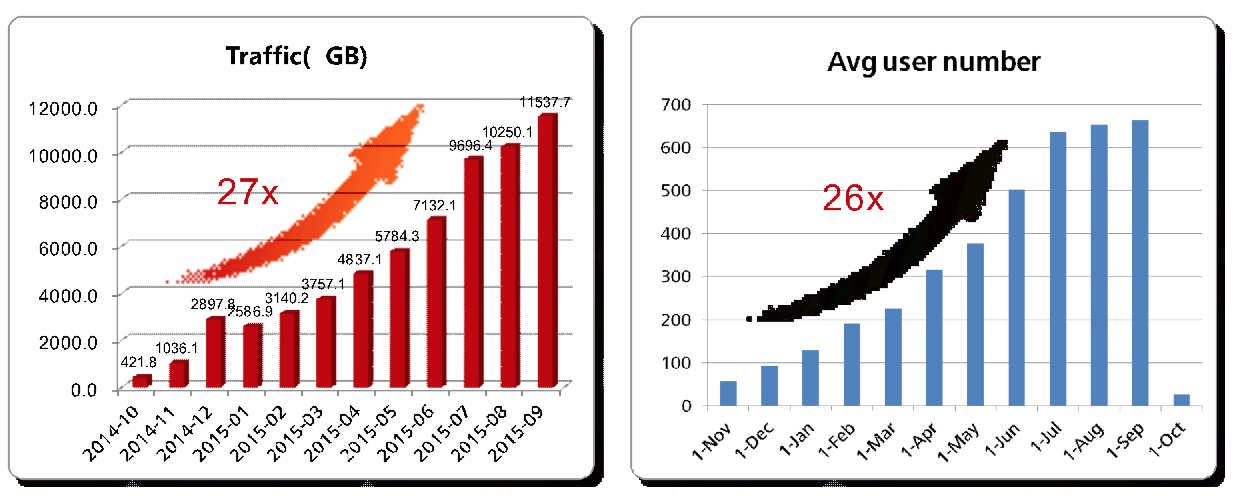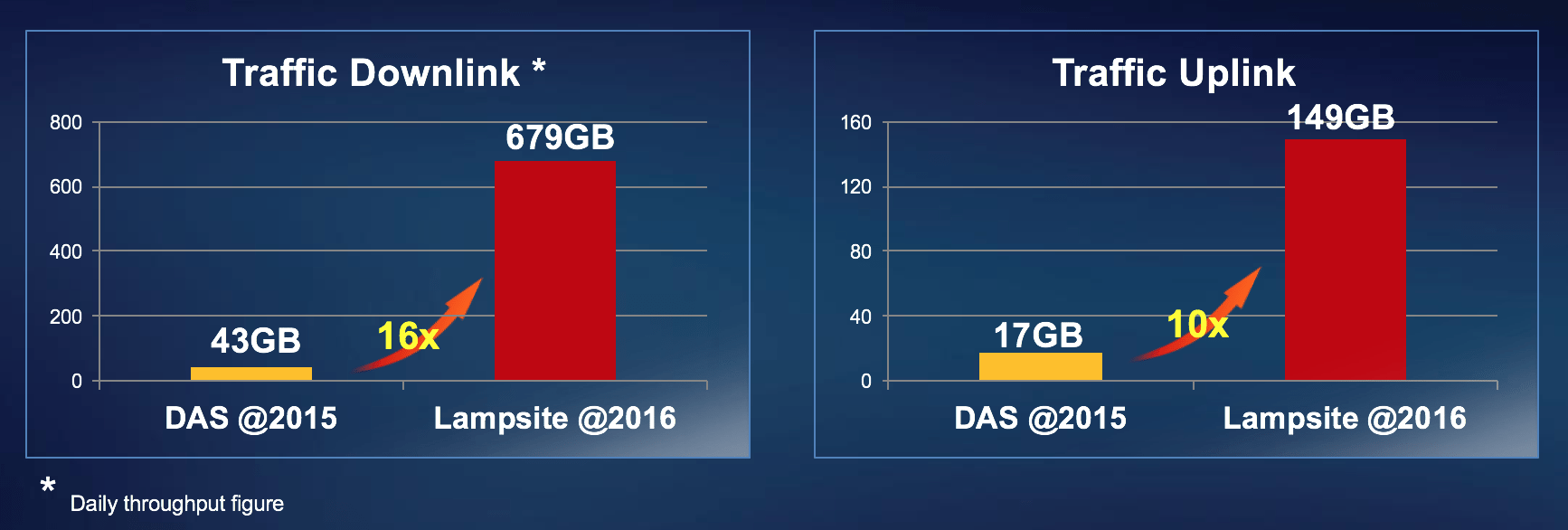Indoor digitalization driven by capacity demands, business models focused on owner ROI, value-added services
Consumers are hungry for mobile data, particularly video content, and the demand for this type of service largely comes from users in transit hubs, offices or other indoor venues, which are traditionally marked by poor cellular connectivity due to physical challenges.
This market dynamic has forced service providers to shift network investment indoors, raising a new set of challenges associated with both technology and business model.
Huawei is looking to bring a new approach to both of those challenges in addressing the growing public and enterprise small cells market.
In an exclusive interview with RCR Wireless News, Peter Zhou, president of Huawei’s Small Cell Product Line, discussed the ICT vendor’s strategy around “indoor digitalization,” while highlighting several use cases representative of an emphasis on business case and technological innovation.
Zhou highlighted Huawei’s LampSite, a cloud-based platform featuring centralized baseband processing designed to maximize end-user experience and spectral efficiency, which it said creates value by easing network maintenance costs and enabling easy service creation and delivery.
Zhou distilled the LampSite value proposition into three key points:
- “A cloud-based small cell architecture brings efficiency and it also brings better performance because those remote, low transmission power nodes can coordinate with each other.”
- “The demand for capacity indoors is growing along with smartphone penetration. An indoor digitalized system can be used to dynamically allocate or plan for capacity needs unlike [distributed antenna systems] where capacity is fixed.”
- “We can use the digital platform to create value-added services. Some operators have trouble deploying small cells indoors because they don’t understand the needs of the venue owners. Owners care about location-based, contextually aware services like precision marketing. If we can share those value-added services, the owners will be more accommodating to a mobile operator’s small cell system.”
Consider Huawei’s deployment at Beijing Capital International Airport, which at 1.4 million square meters and hosting more than 80 million passengers each year is the largest airport in China. Looking to increase the capacity from the existing DAS, Huawei deployed 2,200 remote radio units (in just four working hours per day over three months) controlled by LampSite. After the installation, mobile broadband traffic reportedly increased by 27 times.

“It acts like one cloud-based base station rather than 2,200 base stations,” Zhou said. “This brings significant efficiency of network maintenance. It also brings better performance because those remote low transmission nodes can coordinate with each other.”
The Marina Bay Sands in Singapore is another example of how this type of centralized small cells deployment, coupled with a value-added service delivery platform, can change a business case. Marina Bay Sands is claimed to be one of the largest luxury shopping facilities in Asia with more than 100,000 square feet in three high-rise towers visited by more than 40 million people each year. The problem, Zhou explained, was poor LTE coverage from on the outdoor macro system, coupled with the need for location-based retail services not supported by the existing DAS.
“In this case,” Zhou said, “the motivation is not the technology. The motivation is the new business model. We start to understand that a major difficulty of deploying small cells is site acquisition. We needed to use different kind of sites. We had to think about how we can share the benefit of site agreements by offering value-added services to attract more small cells to the indoor space.”
On top of LampSite, Huawei used its Service Anchor platform, which is designed to provide an open platform to support third-party interfaces that enable enterprise applications and cloud services.
“My team is developing the mobile broadband access technologies,” Zhou said. “We are not developing the applications, so we created an open platform called Service Anchor. This can output location and network information, so developers can launch apps through the platform and initiate different types of services.”
In Marina Bay Sands this equates to precise marketing that creates new revenues. “With Service Anchor, they understand where and when people will be,” Zhou said. “This allows for location-based advertisements. The shopping mall owners start to understand the value of footprint analysis and can even dynamically adjust shop rental prices.”

Focusing on sheer capacity, Huawei’s deployment, in conjunction with Vodafone, at the Fira Gran Via in Barcelona, Spain, for Mobile World Congress 2016, demonstrated how indoor LTE service drives use.
In 2015, the venue DAS supported 43 gigabytes of downlink data traffic and 17 GB uplink. With LampSite 2.0 installed, Mobile World Congress attendees in 2016 used 679 GB of downlink data and 149 GB of uplink data. Users saw an average download speed of 98 megabits per second and average uplink speed of 42 Mbps.

Zhou said stakeholders were initially skeptical the new generation LampSite 2.0-based network could actually deliver on the projected performance improvements.
“We did some trials inside the building before we started to deploy formally with the desire to make them believe in the system,” Zhou said. “Then the team started to understand the performance. We saw a first day volume of traffic 16-times bigger than the first day of 2015. We started to believe this the best network in history. People loved it. Compared to the DAS deployment, it saved lots of times, lots of money and saved on [total cost of ownership].”
Taken as a whole, LampSite 2.0’s designed flexibility and support for an attractive business case coupled with ever-increasing market demand for high-speed mobile data set the stage for a transition from analog DAS to indoor digitalization via centralized small cells networks.
Zhou explained LampSite 2.0 can be updated over-the-air and capacity can be shifted in real time based on network analytics. As carriers continuously upgrade their network technology along the path to “5G,” the technology could help cut capital and operational costs.
“When we start to upgrade our network access technology to 4.5G and to 5G, we need to include new technologies,” Zhou added. “Those new technologies have to be smoothly integrated. On the other hand, more and more operators are starting to understand that indoor systems like DAS cannot have a smooth evolution. We have to use digitalized systems. Considering 5G, we start to think about new applications like virtual reality, 4K video and new vertical industrial applications. It’s not going to happen with the legacy systems that purely rely on the macro baseband outdoor or the analog system like DAS. LampSite 2.0 can understand what’s happening on the network, which brings myriad efficiencies for network operators. LampSite 2.0 is truly a digitalized system and we believe digitalization indoors is a must.”
To learn more about LampSite 2.0, stop by the Huawei booth at the Small Cell World Summit, May 10-12, at the Intercontinental O2 Hotel in London.

